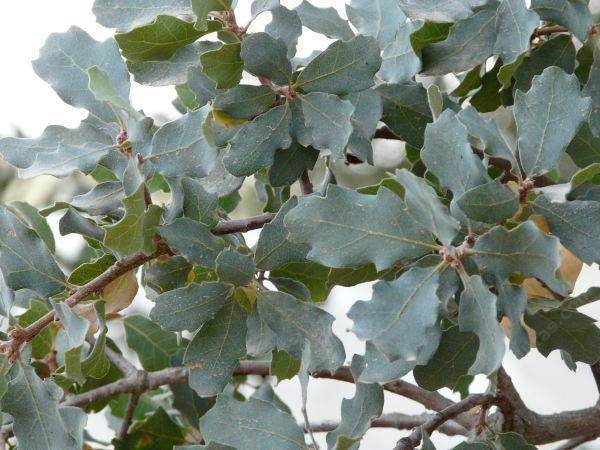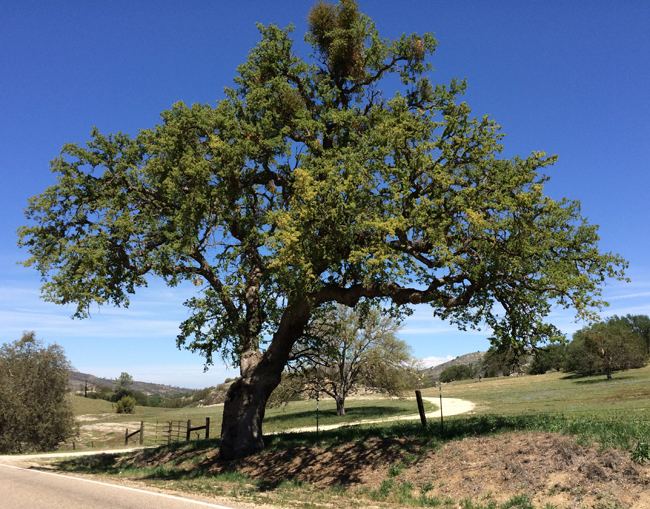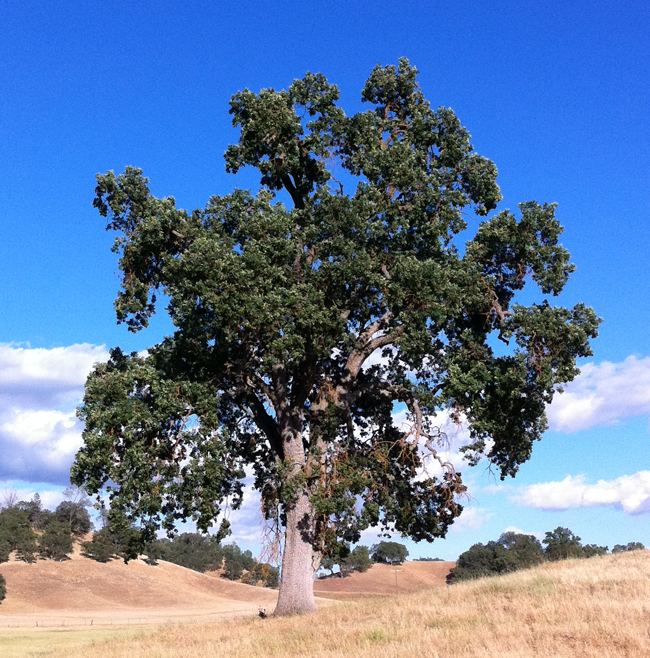Section Quercus Higher classification Oak | Genus Quercus Scientific name Quercus douglasii Rank Species | |
 | ||
Similar Oak, Quercus lobata, Quercus wislizeni, Quercus kelloggii, Quercus chrysolepis | ||
Quercus douglasii, known as blue oak, is a species of oak endemic to (found only in) California, common in the Coast Ranges and foothills of the Sierra Nevada. It is occasionally known as mountain oak and iron oak.
Contents

Description

Quercus douglasii is a medium-sized tree, generally 6–20 m (20–66 ft) tall, with a trunk 36–60 cm (1–2 ft) in DBH. The tallest recorded specimen was found in Alameda County, at 28.7 m (94 ft). The bark is light gray with many medium-sized dark cracks; from a distance, it can appear almost white. The name blue oak derives from the dark blue-green tint of its leaves, which are deciduous, 4–10 cm (1.6–3.9 in) long, and entire or shallowly lobed. The acorns are 2–3 cm (0.8–1.2 in) long, with a moderately sweet kernel, and mature in 6–7 months from pollination.
Ecology

Quercus douglasii prefers dry soil and plenty of sunlight. It is the most drought tolerant of California's deciduous oaks.

Quercus douglasii often co-habitates with gray pine (Pinus sabiniana), and is also found with interior live oak (Q. wislizeni), valley oak (Q. lobata), Oregon white oak (Q. garryana), canyon live oak (Q. chrysolepis), and Pacific madrone (Arbutus menziesii). Natural hybrids between Q. douglasii and the related shrub live oak (Q. turbinella), Q. lobata, and Q. garryana often occur where the species grow together in the same area.

Individual trees over 500 years old have been recorded, although most are less than 300 years old. Recent research has found several unlogged stands of blue oak woodlands, suggesting that the state may harbor over 500,000 acres (200,000 ha; 2,000 km2) of such old-growth forests.
Quercus douglasii is not susceptible to the fungal disease known as sudden oak death.
